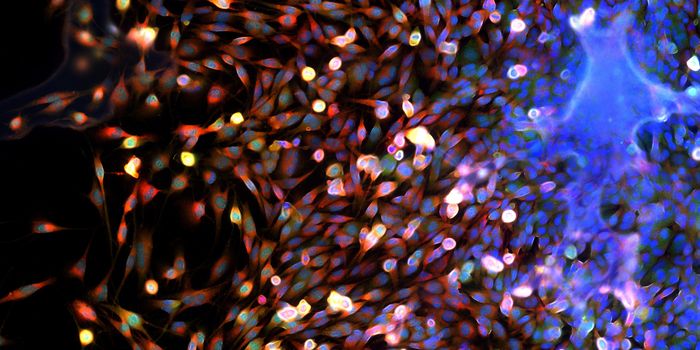CrAssphages and the Manipulation of the Microbiome
The advancement of genetic and computational tools has given us so much new information it's opened up new research fields. Metagenomics involves sequencing all of the genetic material in a sample and then comparing those sequences to those that are known. This approach has shown us that we carry a huge number of microbes in our gastrointestinal tract, including fungi, bacteria, and viruses.
Some of those viruses only infect bacteria; they are called bacteriophages. In 2014, a group of bacteriophages called crAssphages were discovered. They are thought to be present at high levels in the human gut and carried by nearly everyone. If we can learn how they work, they may be useful therapeutic tools.
Researchers have now learned more about how human gut crAssphages infect bacterial cells. This research, which was reported in Nature, may help scientists develop methods to alter and improve the health of the gut microbiome, or the quality of water.
"CrAssphages are the most abundant viruses infecting bacteria in the human gut. As such, they likely control our intestinal community of microbes (the microbiome)," said co-author Konstantin Severinov, a principal investigator at the Waksman Institute of Microbiology and a professor of molecular biology and biochemistry at Rutgers University-New Brunswick.
"Understanding how these tiny viruses infect bacteria may allow scientists to control and manipulate the makeup of the microbiome, either by increasing the proportion of beneficial bacteria in our intestines or decreasing the number of harmful bacteria, thus promoting health and fighting disease."
In this study, the scientists determined that crAssphages have a type of RNA polymerase, an enzyme that can generate RNA transcripts from DNA. RNA transcripts can serve different functions, but they are mostly known as molecules that can be used by molecular machinery to produce proteins. RNA polymerases are found in living organisms from plants to animals, suggesting that they come from an ancient, common ancestor.
The researchers revealed the structure of the crAssphage RNA polymerase at the atomic level and determined that it closely resembles versions of RNA polymerase that are found in higher-order animals and humans, which to silence RNA transcripts in a process known as RNA interference, and not those found in bacteria.
"This is a startling result. It suggests that enzymes of RNA interference, a process that was thought to occur only in cells of higher organisms, were 'borrowed' from an ancestral bacterial virus early in evolution," Severinov said. "The result provides a glimpse of how cells of higher organisms evolved by mixing and matching components of simpler cells and even their viruses.
"In addition to deep evolutionary insights, phage enzymes such as crAssphage RNA polymerase may be used in synthetic biology to generate genetic circuits that do not exist in nature," he added.
It may be possible to engineer versions of the crAssphage that can clean up pollution or produce a valuable molecule, for example.
"We are now trying to match the thousands of different crAssphage viruses in our gut with the bacterial hosts they infect," Severinov said. "By using just the 'right' bacterial virus, we will be able to get rid of bacteria it infects, which will allow us to alter the composition of the gut microbiome in a targeted way."
Sources: AAAS/Eurekalert! via Rutgers University, Nature









